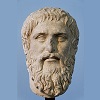12.14: Empires- Recovery and Collapse
- Page ID
- 12426
Frederick Barbarossa and the Holy Roman Empire
The Investiture Controversy had weakened the power of the Holy Roman Emperors. In the early part of the twelfth century, power in the Holy Roman Empire decentralized in the same way that it had in tenth- and eleventh-century France, while the cities of northern Italy were increasingly governing themselves with little direct authority exercised by the Holy Roman Emperors. The Holy Roman Emperor Frederick Barbarossa (r. 1152 – 1190) sought to arrest this decline and make his subjects adhere to his authority.
Frederick’s two overriding goals were to ensure that the great princes of Central Europe and the city-states of Northern Italy acknowledged and submitted to his authority. Northern Italy was a particularly vexing challenge. By the middle of the twelfth century, many of the cities of northern Italy had gradually moved from rule by an urban nobility or bishops to self-government by an elected commune, and these communes were often reluctant to acknowledge imperial authority, especially with respect to the taxes that Barbarossa believed were owed him. Shortly after beginning his reign, Barbarossa sought to implement this authority.
class="lt-human-12426">Barbarossa had a great deal of initial success, but eventually the city-states of Northern Italy united into an organization called the Lombard League, and this League allied with the popes, who lent their moral authority to the cause of the northern Italian city-states. Indeed, part of the difficulties faced by Barbarossa was that any pope would be more likely to try to keep northern and central Italy as far from direct control of the Holy Roman Emperors as possible. If the emperors were too powerful in Northern and Central Italy, then they would threaten the papacy’s independence, jeopardizing everything the eleventh-century reforming popes had struggled to accomplish. Eventually, this coalition of the papacy and Lombard League inflicted a military defeat on Barbarossa at the 1176 Battle of Legnano, after which Barbarossa was forced to concede a great deal of self-rule within the Empire to the Italian city-states.
Near the end of his reign, Barbarossa would lead an immense army on a crusade. In 1187, the kings of Western Europe found themselves forced to respond to a great catastrophe for Christendom: the city, and, indeed, most of the Kingdom of Jerusalem had fallen to a Muslim army under the sultan Saladin. These kings responded with the effort known as the Third Crusade.
The Komnenoi in Byzantium
The other empire claiming (with somewhat more justice) to be the rightful heir of the Roman Empire was the Byzantine Empire, and, after the disaster of Manzikert, the Komnenos emperors had managed to rebuild a Byzantine army based on the system of pronoiai and mercenary forces. Emperor John II (r. 1118 – 1143) followed up on Alexios’s work and established effective Byzantine control over much of Western Anatolia, consolidated imperial hold on Southeastern Europe, and, indeed, forced the Crusader States to acknowledge him as their overlord.
.png?revision=1)
At the same time that Barbarossa sought to build the Holy Roman Empire as a credible power, in the east, Manuel Komnenos (r. 1143 – 1180) sought to do the same with his Empire. He managed to suppress the growing power of Venice in the Eastern Mediterranean, form an alliance with the growing kingdom of Hungary, and temporarily force the Turks of central Anatolia to acknowledge his overlordship. In the end, however, the emperor’s reach exceeded his grasp. His attempt to conquer Fatimid Egypt in alliance with the Kingdom of Jerusalem failed when the military commander of Damascus, Saladin, outmaneuvered both Byzantium and Jerusalem and instead added Egypt to the territory of Damascus, which created a Muslim Empire in the Middle East that menaced the Crusader States (see Chapter Eight). And the emperor’s effort to return central Anatolia to Byzantine rule ultimately failed when his army was defeated by the Saljuq Sultanate of Rum at Myriokephalon in 1176. Ultimately, the Byzantine Empire’s undoing was not necessarily in individual battles, but rather in that the loss of the wealthy agricultural land of Central Anatolia to the Turks meant that its emperors never quite had the tax base necessary to put their ambitions of a restored Roman Empire into practice.
.png?revision=1)
In the end, the Komnenoi had managed to restore the Byzantine Empire as a regional power, but it was left with structural weaknesses that would eventually prove to be its undoing.


